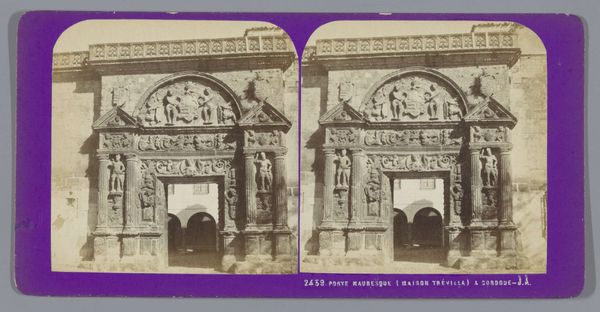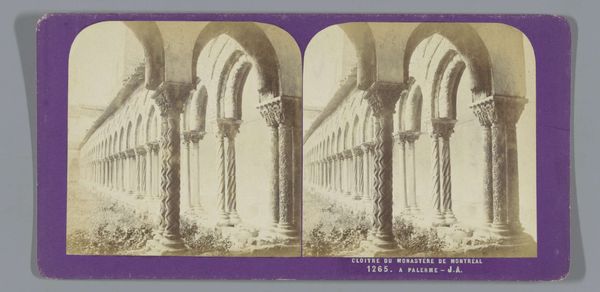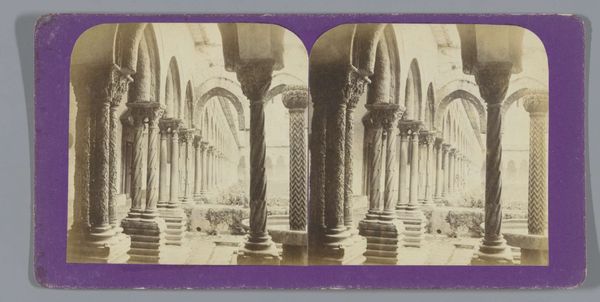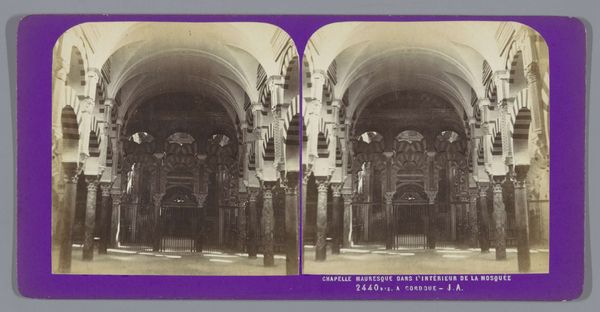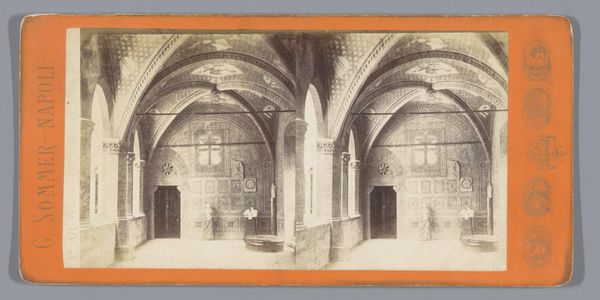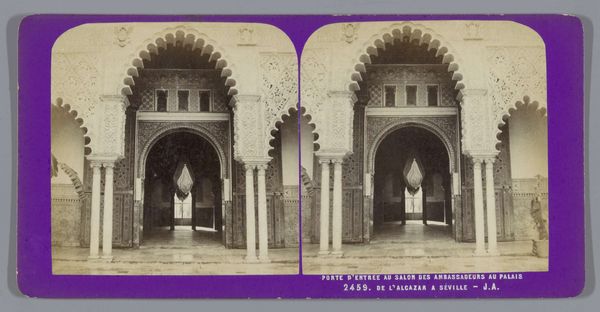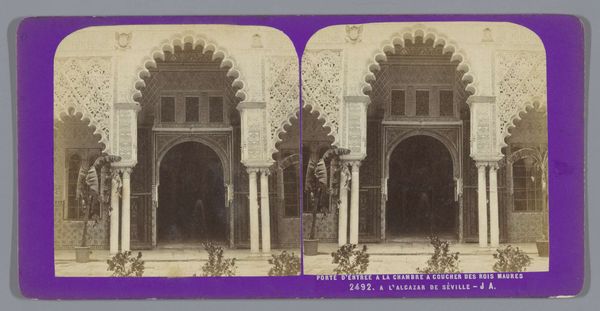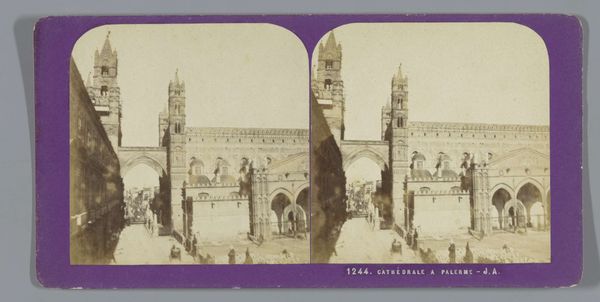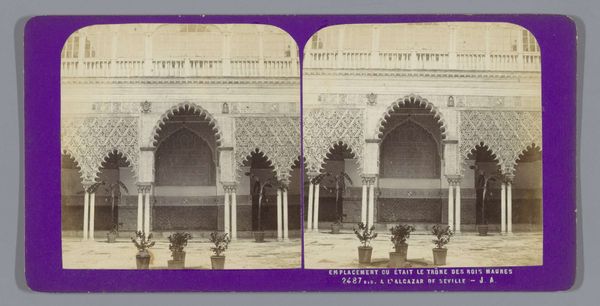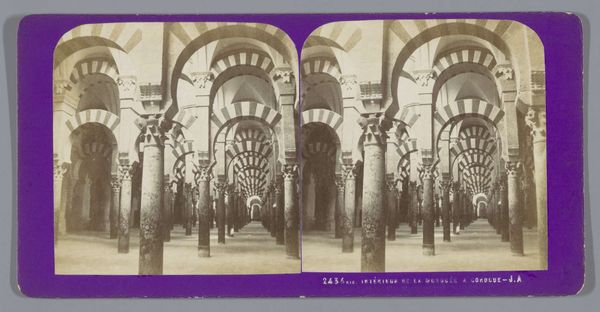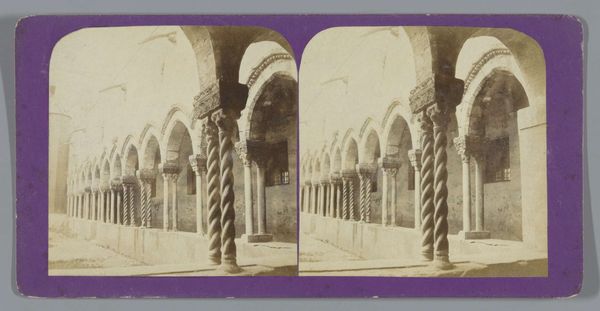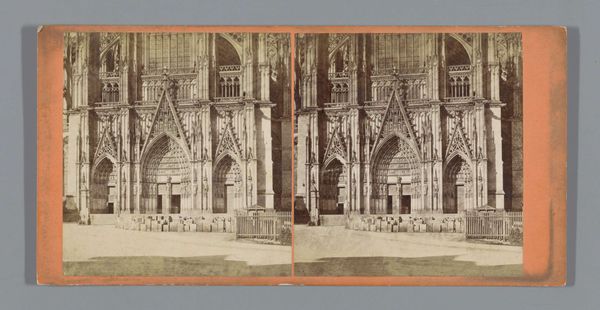
photography, architecture
#
portrait
#
photography
#
ancient-mediterranean
#
architecture
#
building
Dimensions: height 85 mm, width 170 mm
Copyright: Rijks Museum: Open Domain
Editor: This is a stereo photograph from the late 19th century, showing the entrance to the Cathedral of Burgos, by Jean Andrieu. The sheer amount of detail in the stone carving is astonishing. What stands out to you most when you look at this photograph? Curator: For me, it's the visibility of labor in the stone work. The photograph collapses the distance between the viewer and the craftsmanship itself. This image, mass-produced through photography, circulated an understanding of that highly skilled labor involved in creating religious architecture. Editor: I see what you mean. You can really trace the artisan's hands in every detail. The image isn’t just documenting architecture, it's showing how it was constructed. Curator: Precisely. The reproduction here isn’t about spiritual aspiration alone. Think about how this photograph, as a consumer good, helped shape a nineteenth-century understanding of medieval craft and its relationship to industrial labor. Editor: So the value shifts from just admiring the cathedral to also understanding the context of its creation? It makes you think about the economics around building something like this. Who was being paid, what were they paid? Curator: Exactly. Also, consider how photography, itself a burgeoning industry at the time, plays into this system of value. What aspects of labour are promoted versus concealed, here? And to what end? Editor: This perspective makes me rethink how I see historical photographs and the narratives they tell. I had originally focused only on the beautiful stone work. Curator: It is striking! But photography’s ability to democratize art viewing changes who gets access to labor stories. Thank you for this close looking.
Comments
No comments
Be the first to comment and join the conversation on the ultimate creative platform.
